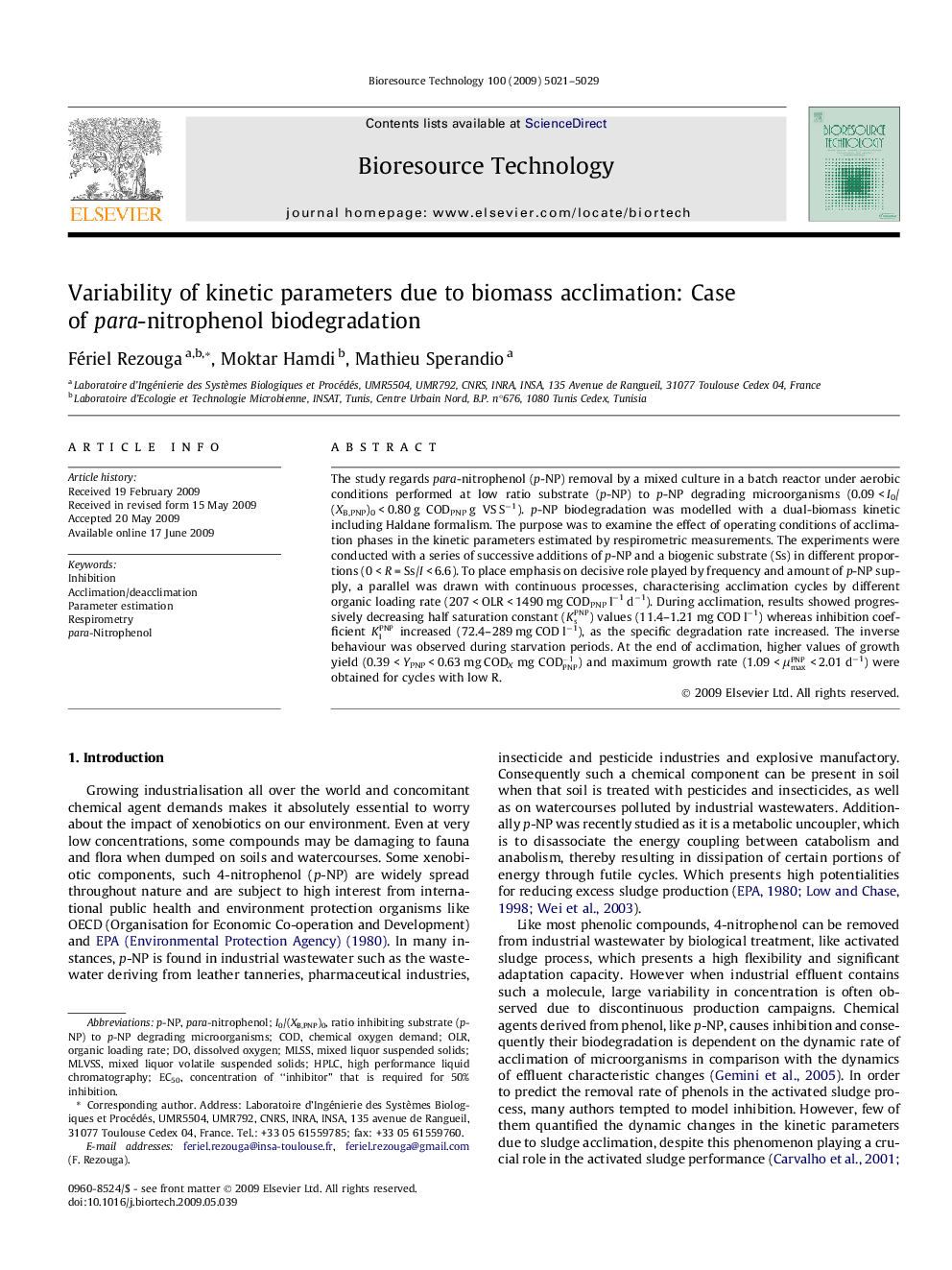| Article ID | Journal | Published Year | Pages | File Type |
|---|---|---|---|---|
| 684451 | Bioresource Technology | 2009 | 9 Pages |
The study regards para-nitrophenol (p-NP) removal by a mixed culture in a batch reactor under aerobic conditions performed at low ratio substrate (p-NP) to p-NP degrading microorganisms (0.09 < I0/(XB,PNP)0 < 0.80 g CODPNP g VS S−1). p-NP biodegradation was modelled with a dual-biomass kinetic including Haldane formalism. The purpose was to examine the effect of operating conditions of acclimation phases in the kinetic parameters estimated by respirometric measurements. The experiments were conducted with a series of successive additions of p-NP and a biogenic substrate (Ss) in different proportions (0 < R = Ss/I < 6.6). To place emphasis on decisive role played by frequency and amount of p-NP supply, a parallel was drawn with continuous processes, characterising acclimation cycles by different organic loading rate (207 < OLR < 1490 mg CODPNP l−1 d−1). During acclimation, results showed progressively decreasing half saturation constant (KsPNP) values (11.4–1.21 mg COD l−1) whereas inhibition coefficient KIPNP increased (72.4–289 mg COD l−1), as the specific degradation rate increased. The inverse behaviour was observed during starvation periods. At the end of acclimation, higher values of growth yield (0.39 < YPNP < 0.63 mg CODX mg CODPNP-1) and maximum growth rate (1.09 < μmaxPNP < 2.01 d−1) were obtained for cycles with low R.
